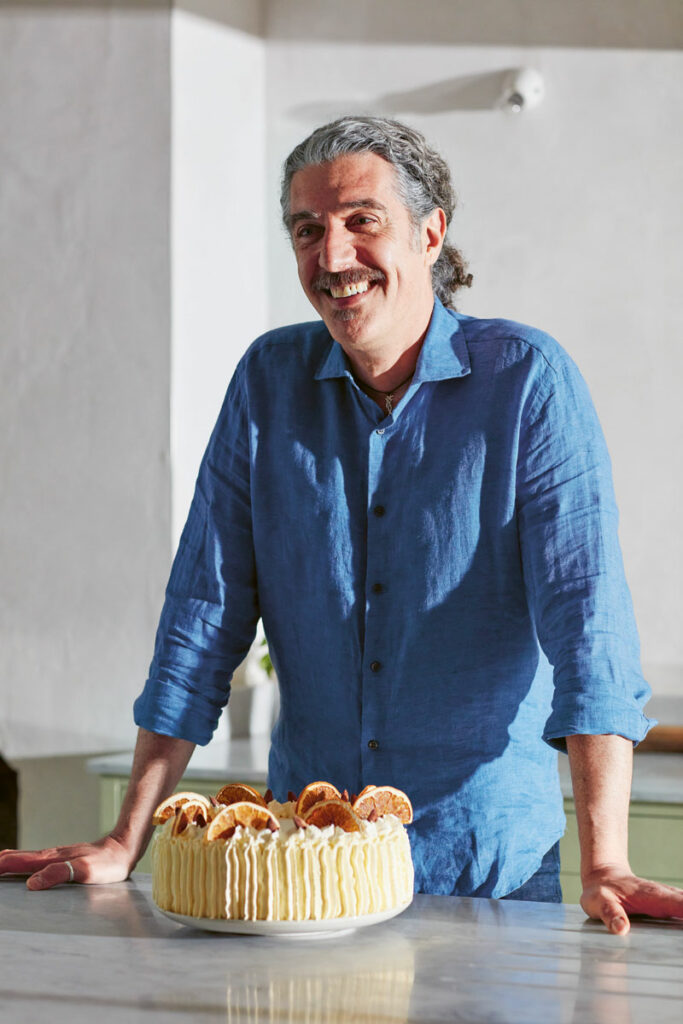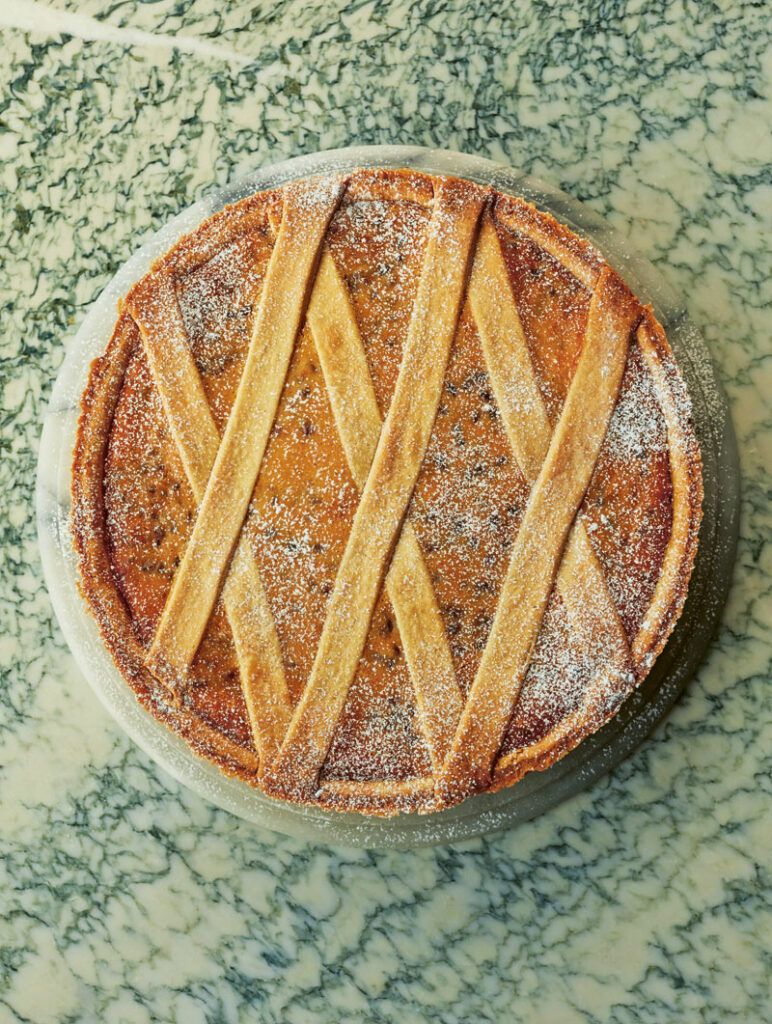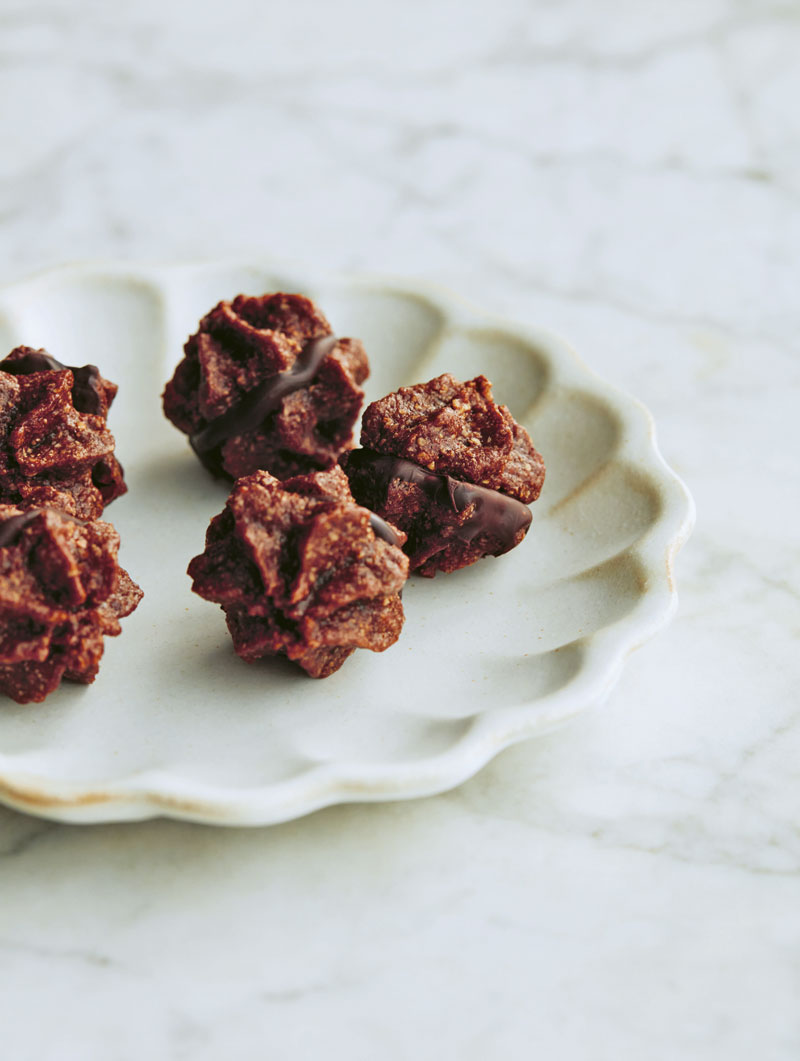As the reigning Bake Off champion Giuseppe Dell’Anno prepares to launch his debut cookbook this month, we sit down with the Bristol local to talk all about his most treasured family recipes and his nostalgia as the new series begins on Channel 4…
Twelve months on from being crowned The Great British Bake Off’s first Italian winner, Bristol local Giuseppe Dell’Anno has had a year to remember. Having appeared on countless radio and television programmes, sharing his experience of the Bake Off tent and imparting his knowledge on all things focaccia, Giuseppe is now a Radio Times columnist and published author.
The 46-year-old engineer entertained the nation with many a memorable moment during his time on the twelfth series of the show, forming close bonds with his fellow bakers, impressing judges Paul Hollywood and Prue Leith and building friendships with presenters Noel Fielding and Matt Lucas. From creating a spectacular Mad Hatter’s Tea Party showstopper to kissing Mr Spatula, tuning into watch Giuseppe every Tuesday night was a highlight on the autumn calendar.
Now, as his new cookbook, Giuseppe’s Italian Bakes, prepares to hit the shelves on 13 October, we sit down with the Britalian baker to chat all about how his new book was “the most precious gift” Bake Off could ever give him, how he was able to transform his family’s most treasured hand-written recipes into 200+ pages of pure joy and, of course, what his predictions are for the brand new series…

Image credit: ©Matt Russell

One year on from Bake Off – how has this year been for you? What have been the highlights so far?
Over the past year my life has been turned up-side-down, quite literally: last summer I started a new job in Milan with the plan to move the whole family back to Italy. Twelve months down the line, I quit that job, moved back to Bristol, wrote my very first cookbook and had lots of fun with the Bake Off aftermath. I have greatly enjoyed having a peek into the entertainment world, previously entirely alien to me. Participating into the production of TV and radio programmes, visiting their studios and meeting people that I’d only seen on my telly until then has been epic.
Can you tell us all about Giuseppe’s Italian Bakes, the family recipes included and how they’ve been developed from handwritten notes?
All the recipes in Giuseppe’s Italian Bakes are timeless Italian classics: I have purposely restrained myself from being overly creative and I have actively tried to remain as respectful as possible of the original flavours, formats and shapes. My dad’s recipes have been a phenomenal source of information and inspiration: in fact, I did very little other than translating his very sparse, hand-written notes into full-blown, workable recipes, fit for a domestic environment and suitable for bakers of all levels of experience.
What does it mean to you to publish this book?
The possibility of writing this book is certainly one of the most precious gifts Bake Off could ever give me: I had been planning for a long time to tidy up my dad’s recipes as a family heirloom to pass on to my children. The chance I have been given to share it far and wide to a much broader audience fills me with pride. My ambition is that every single copy of this book gets used and abused to exhaustion. The only thing that would make me any happier now is knowing that in many other families across the world many more people are enjoying the same treats I enjoyed myself.
What have you enjoyed the most about putting Giuseppe’s Italian Bakes together?
I have genuinely enjoyed the whole process: the research behind each recipe, the testing and tasting of each bake, the discussions with the expert bakers in my family to nail down the smaller details. The part that I have relished the most has been browsing through the old and crumbly notes that had been stored back in my parents’ house for decades. The cherry on the cake (pardon the pun) is that I also stumbled upon the odd, old family photo while diving into those packs, that we had all forgotten about. What a treat!
Which particular recipe reminds you of your favourite memory?
The smell of each bake is a particularly powerful trigger for me: the most aromatic bakes are those that, more than others, bring back memories of my childhood. Among these, pastiera is without any doubt my favourite. It’s a moreish, extremely aromatic Easter cake, made with ricotta and wheat grain, flavoured with candied orange peel and orange blossom water. My dad used to bake them by the dozen each Easter to give them out as presents to friends and family, so baking one now brings back in my mind the crisp, cool and sunny atmosphere of Italian early spring days.
What are you most looking forward to when the book comes out and you embark on your tour?
One of the things that I have enjoyed the most of my post-Bake Off life is interacting with the people. Which is pretty unusual for an introvert like me. I keep receiving so much affection and positivity from people, both in person and through social media and I cannot wait to meet in person all those that will be joining me during the book tour: I really look forward to thanking them for their incredible support.
What are you loving about Bristol’s food scene at the moment? Is there any particular restaurant/café/deli/bakery/chef that deserves a special shout out?
This is a difficult question for me to answer: sad as it might sound, I have hardly had the time to have any social life recently. Eating out for me is a real, and rare, treat! I have only just recently discovered a delightful Indian restaurant in my very village: it’s literally a stone’s throw from my front door and I only went there for the first time last summer!
What’s the biggest lesson you’ve learned over the last two years?
This is going to sound trite and corny, so apologies in advance: I have learned to accept myself, my coarse grey hair, my overly-Mediterranean features and my stubborn Italian accent. Winning Bake Off has been a validating exercise on a truly spectacular scale, which has taught me that it is not only fine to accept your true self, but that striving (and working hard) to be the best version of yourself is, in itself, the most fulfilling reward you can ever hope for.
What’s next in the pipeline for you?
Who knows? I miss my old engineering job, so I hope to be able to find the time to get back to it somehow. But I’d love to keep alive this new food-writing side of me. That is, of course, until some big TV producer comes up and offers me my own TV show… [fingers crossed].
How is it watching the bakers in the tent this year knowing exactly what they’re going through?
I had a severe bout of nostalgia earlier in the year, while they were filming the new season of the show: I missed being in the tent and the continuous adrenaline rush that comes with it. I am now over it though, and have been able to enjoy the show as any other viewer. Perhaps the only difference now is that I also ‘see’ the things that are not shown on camera, having familiarised myself with the tent surroundings daily for over seven weeks. Thankfully, it does not detract in the slightest from the magic of the show!
Quickfire questions
What would you cook at your dream dinner party and who would you invite?
Pizza, pizza and more pizza. Maybe some focaccia too. Did I mention pizza? I’d invite all my old friends from uni.
Your guilty food pleasure is …
Few things give me as much pleasure as a full English breakfast on a lazy weekend morning. And I don’t even feel guilty!
Preferably your eggs would be …
Poached to perfection and on a toasted English muffin.
Your spice cupboard essential is …
Balsamic vinegar of Modena: not a spice, strictly speaking, but I drizzle it on almost everything.
Your favourite family recipe from your new book is …
Baci di Alassio: chocolate and hazelnut flavoured, small, chewy biscuits filled with chocolate ganache. Careful, though, they are utterly addictive!
Giuseppe’s Italian Bakes by Giuseppe Dell’Anno, (Quadrille, £20) is out on 13 October and will be available to buy online and from all good bookshops.
Baci di Alassio
aka ‘Alassio Kisses’
(Gluten Free, Dairy Free)

INGREDIENTS: MAKES 18
FOR THE BISCUITS
130g (1 cup) blanched hazelnuts
100g (generous ½ cup) caster (superfine) sugar
20g (generous 1 tbsp) unsweetened cocoa powder
¼ tsp ground cinnamon
pinch of salt
35g (1¼oz) egg white (about 1 medium egg white)
1 tsp vanilla bean paste
25g (scant 2 tbsp) clear honey
FOR THE FILLING
70g (2½oz) dairy-free dark chocolate chips or bar (50–55% cocoa solids)
METHOD
MAKE THE BISCUITS
1. Place the shelf in the middle of the oven and preheat it to 180°C fan (400°F/Gas mark 6).
Place the hazelnuts in a baking tray and roast for 8 minutes until just about golden. Give the hazelnuts a shake midway through the process to ensure an even bake. Take the hazelnuts out of the oven, let them cool for a few minutes, then chill them in the fridge.
2. Change the oven to the static setting at 180°C (350°F/Gas mark 4).
3. Once the hazelnuts have cooled completely, place them in a food processor, add the sugar and pulse the mixture a few times until fine and sandy. If your food processor does not have a pulse function, blitz on maximum speed for no more than 10–15 seconds. Avoid over processing the nuts as they might overheat and leach out oil. Any grittiness due to slightly larger granules of nuts will not be a problem; in fact, it will add to the texture of the biscuits.
4. Transfer the nuts and sugar mixture to a medium bowl, sift in the cocoa, cinnamon and salt, and mix with a spoon until fully combined. Make a well in the centre and add the egg white and vanilla. Incorporate them into the dry ingredients with a spoon to make a stiff paste, then add the honey and combine. The sugar takes a while to dissolve in the liquid ingredients, so stir and fold the mixture for a couple of minutes longer than you think is needed; this will also soften it a little and make piping it easier. Transfer the paste into a piping bag fitted with a 12mm (½in) star nozzle.
5. Piping the biscuits is probably the hardest step, as the mixture is rather stiff. Single-use or silicone piping bags are unsuitable: you should use proper canvas or nylon piping bags for this mixture, or you risk a rupture. For the same reason, if in doubt, use a larger nozzle, as a smaller one will make your life more difficult. Line 2 baking sheets with baking paper and pipe 3–4cm (1¼–1½in) wide dollops, about 3cm (1¼in) apart. You should be able to fit 18–20 biscuits on each tray. Rest the biscuits in the fridge for 12 hours at this stage to develop a slightly crunchier crust, if you have the time and the space; otherwise move to the next step straight away.
6. Bake one tray at a time for no longer than 9–10 minutes. Given the dark colour of the dough, it is pretty difficult to gauge when the biscuits are ready; however, 10 minutes should be more than enough. If in doubt, take them out a minute earlier rather than later: overbaking will make these biscuits tough. Take the biscuits out of the oven and slide the baking paper on to a cooling rack immediately. They will still be soft, so give them a few minutes to cool before taking them off the baking paper.
ASSEMBLE
1. If you are using a chocolate bar, chop it finely with a sharp knife. Place the chopped chocolate or chocolate chips in a small microwave-safe bowl and microwave it for 30 seconds. Take it out and stir the chocolate with a silicone spatula for about 20 seconds to distribute the heat evenly. If there are still bits of solid chocolate, give it bursts of 10 seconds in the microwave, followed by 20 seconds of stirring until all the chocolate is melted. Let the chocolate rest at room temperature for a few minutes to stiffen up. To check whether it is ready, scoop a small amount with the spatula and let it fall back into the bowl: the chocolate is ready when it forms a blob that holds its shape without flowing back into the rest of the chocolate.
2. While the chocolate stiffens up, arrange half of the biscuits upside down on the cooling rack. If your food processor does not have a pulse function, blitz on maximum speed for no more than 10–15 seconds. Avoid over processing the nuts as they might overheat and leach out oil. Any grittiness due to slightly larger granules of nuts will not be a problem; in fact, it will add to the texture of the biscuits.
3. Transfer the chocolate to a small piping bag with a 3–4mm (1/8in) opening (no nozzle required) and pipe about ½ teaspoon of chocolate on each biscuit. You can also simply spoon dollops of chocolate on to the biscuits using 2 teaspoons. Pair each filled biscuit with its empty counterpart, slightly pressing them together, and place them back on the cooling rack to set. Work quickly or the chocolate will set; I recommend filling a few biscuits, then pairing them immediately rather than filling the whole batch first. Make sure the chocolate has hardened fully before taking the biscuits off the cooling.
Featured image: Reigning Bake Off champion Giuseppe Dell’Anno | Image credit: ©Matt Russell



